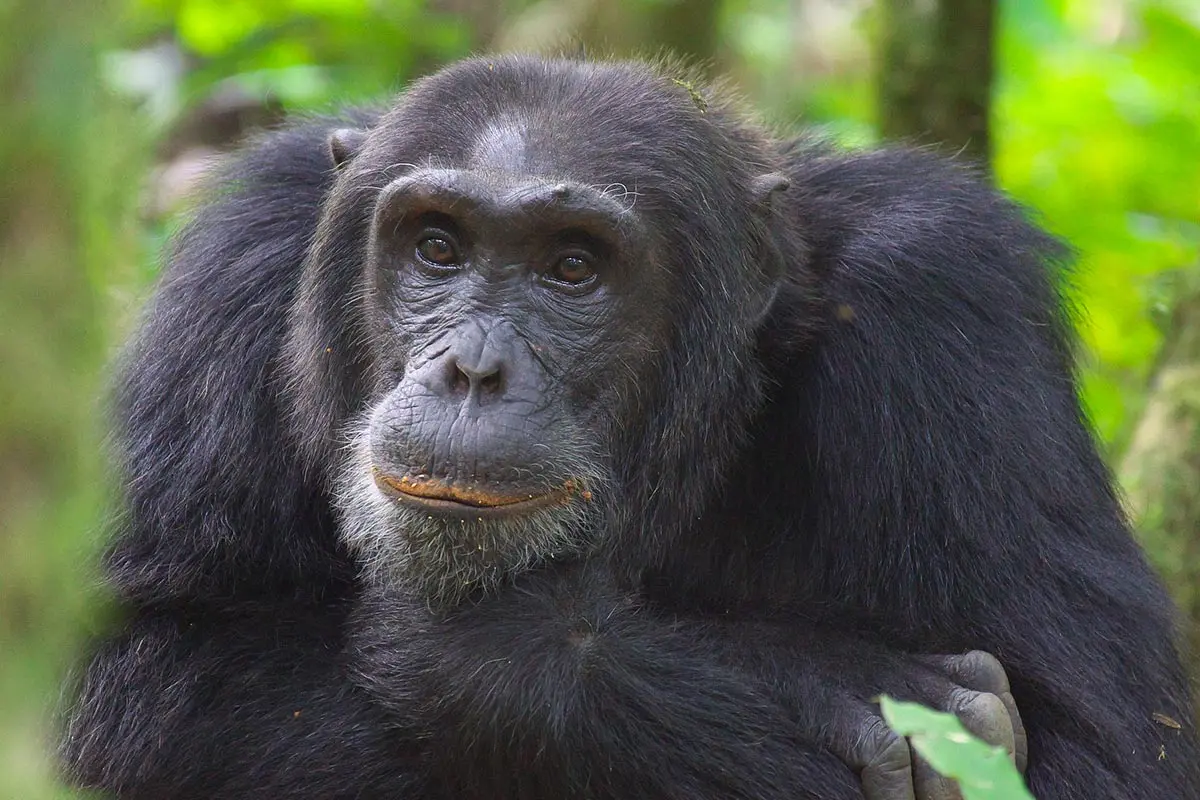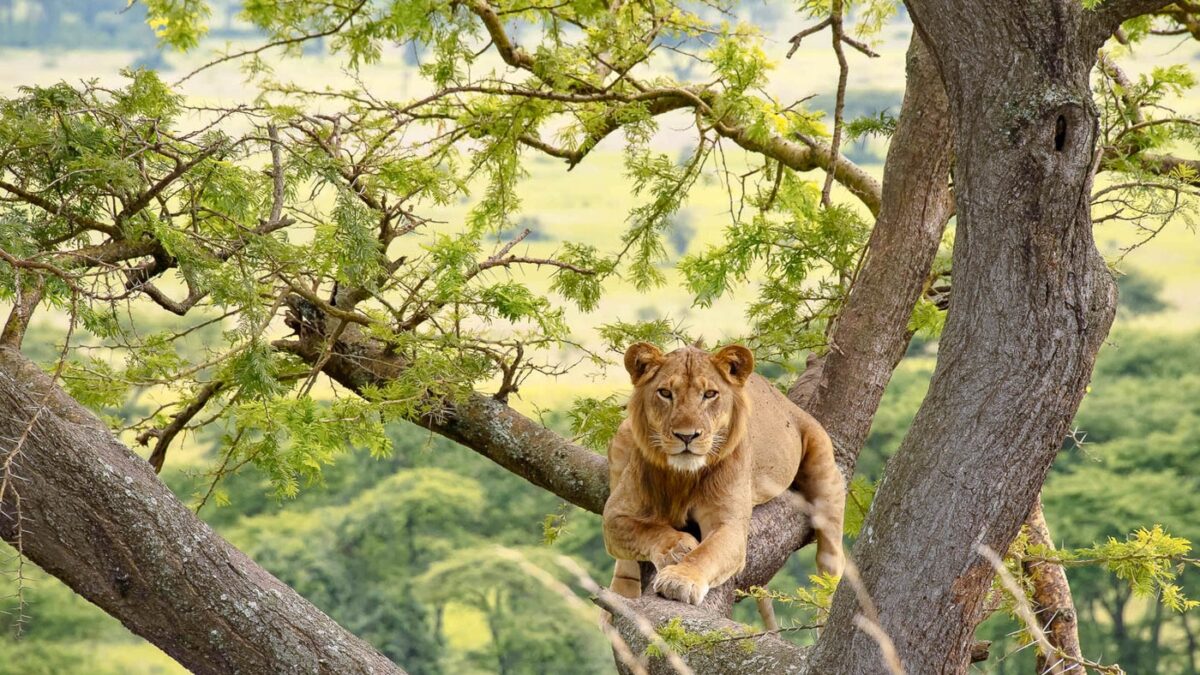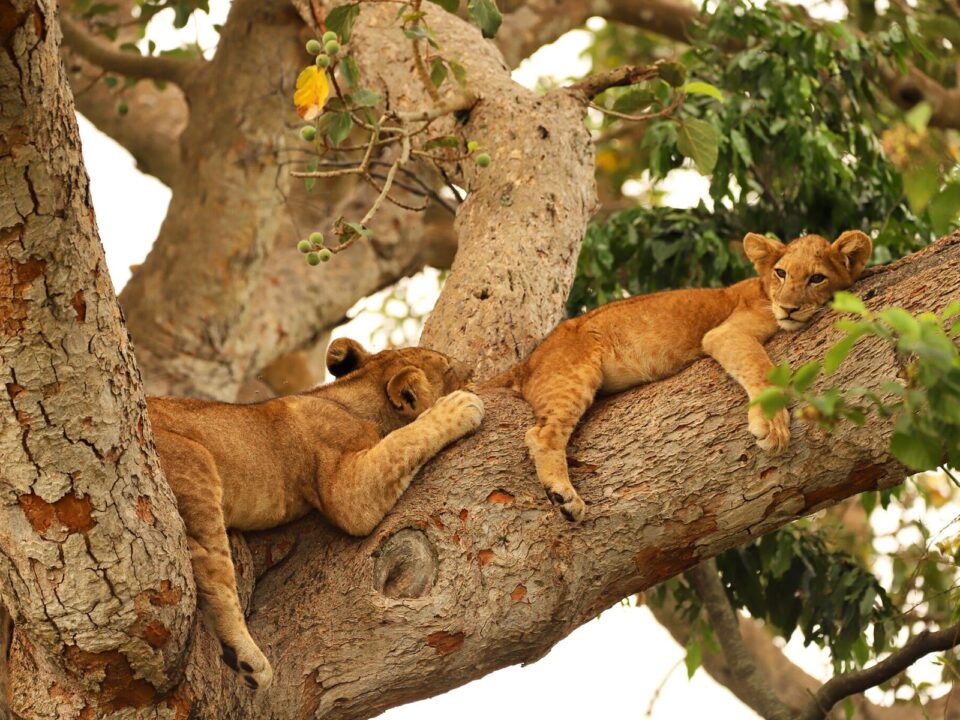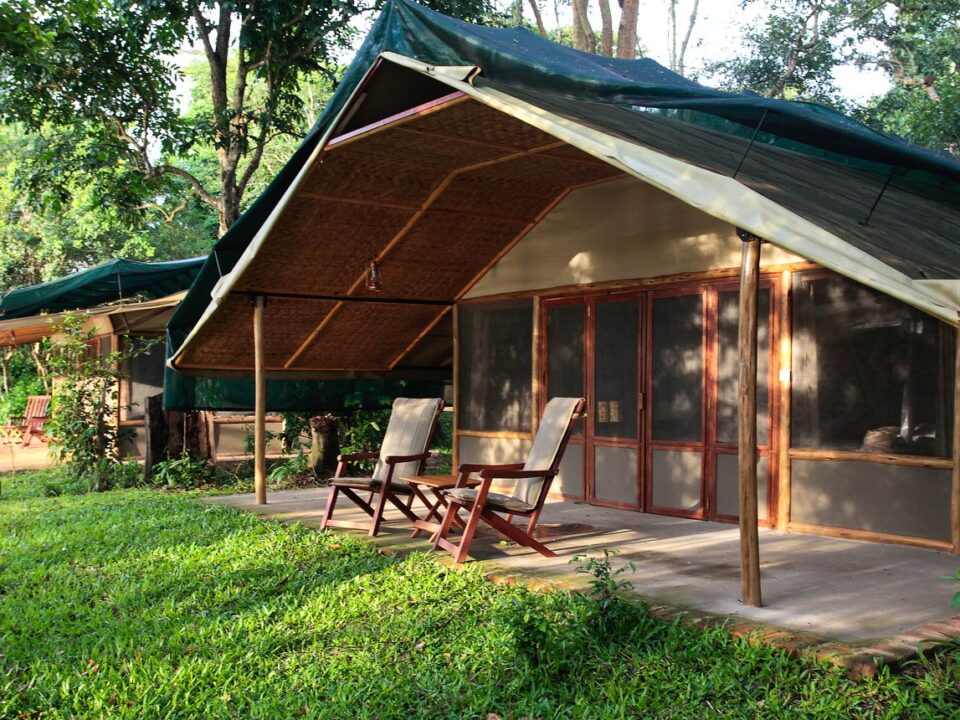
Luxury Hotel NO.5 Entebbe
February 12, 2024
Fly-in Safaris to see Chimpanzees in Uganda
February 12, 2024When is the Best Time to visit Queen Elizabeth National Park
Determining the best time to visit Queen Elizabeth National Park involves considering both weather conditions and wildlife activity. The peak season, from June to August and January to February, offers favorable weather, making it an ideal time for wildlife safaris, guided walks, and chimpanzee tracking. Conversely, the low season, from March to May and October to December, marks the wet season, characterized by lush vegetation and migratory bird species.
Peak Season Advantages (June to August, January to February):
The dry season, spanning June, July, August, September, January, and February, attracts animals to water sources, enhancing wildlife visibility. While June and July are peak months with a considerable number of tourists, the crowds are manageable. This period is perfect for immersive game safaris, wildlife viewing, guided walks, and thrilling chimpanzee tracking expeditions. Visitors should be prepared for colder mornings and nights, necessitating warm clothing.
Low Season Charms (October to December, March to May):
Embracing the wet season has its unique allure, with October, November, December, March, April, and May showcasing the park’s beauty in vibrant greenery. Migratory bird species from Europe and Northern Africa add to the enchantment, making it an ideal time for bird watching. However, this period is considered the low season, resulting in fewer tourists. Travelers should be equipped with warm clothes and rain gear to navigate the occasional showers.
Queen Elizabeth National Park, spanning 1,978 square kilometers and positioned on the Great Rift Valley floor between Lakes George and Edward, boasts diverse habitats. Home to approximately 95 mammal species and 620 bird species, the park offers a rich wildlife experience. The landscape includes lush vegetation, lakes, and rising mountains beyond the park boundaries. The five main vegetation types—forest, bushy grassland, grassland, swamp vegetation/lakeshore, and acacia woodland—contribute to the park’s ecological diversity. Residents, such as Uganda kobs, elephants, warthogs, leopards, hyenas, and the renowned tree-climbing lions, add to the captivating wildlife population.
Essential Packing List for Queen Elizabeth National Park
Preparing for a safari adventure in Queen Elizabeth National Park involves meticulous planning. Trek Africa Expeditions offers guidance on essential items to include in your packing list:
Travel Documents and Cash:
- Stamped visa and valid passport (minimum six months validity)
- Emergency contact documents
- Travel insurance
- Contact details of tour operators
- Medical documents with vaccination records
- Multiple copies of travel documents (physical and digital)
Clothes and Outfit:
- Layered clothing for temperature variations
- Waterproof rain jacket or light fleece
- Neutral and dull-colored lightweight long sleeves and collared shirts
- Knee-zipped trousers
- Brimmed or floppy hats, sunglasses
- Sports bras for comfort during activities
Footwear:
- Light, breathable waterproof runners or sneakers
- Quick-to-dry synthetic socks
- Sandals and dressing shoes
Insect Repellent:
- Sprays for skin, clothes, and restrooms
- Insecticide-treated nets
Entertainment and Relaxation:
- Interesting novels, journals, magazines, biography books
Being well-prepared ensures a seamless and enjoyable safari experience in the captivating Queen Elizabeth National Park.




